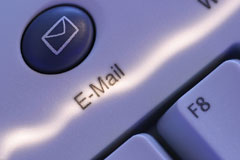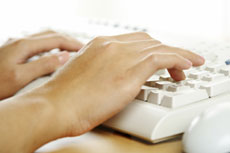One of e-mail’s greatest benefits is that you can communicate quickly and easily with just about anybody. However, one of its biggest challenges is that we think we can write quickly and easily without checking. As a result, our e-mail is often badly composed, too long or too brief, contains spelling and grammatical errors and even goes to the wrong person if we pressed the wrong button too quickly! To avoid this happening to you, see the top then e-mail essentials below:
just about anybody. However, one of its biggest challenges is that we think we can write quickly and easily without checking. As a result, our e-mail is often badly composed, too long or too brief, contains spelling and grammatical errors and even goes to the wrong person if we pressed the wrong button too quickly! To avoid this happening to you, see the top then e-mail essentials below:
1. Decide if e-mail is the best means of communication. E-mail is quick and convenient, but if you require an immediate answer or you’re delivering unpleasant news, a phone call or meeting may be better. Also, if your message is highly confidential email may not be the most secure means of communicating.
2. Decide the purpose of your e-mail before tapping away. What do you want to achieve from this e-mail? What is the deadline for any action? State your purpose in the first couple of sentences.
3. Think about who else may read your e-mail as it may be forwarded onto somebody else. You may wish to alter the words and tone of your message.
4. Write a subject line with real oomph. E-mail users may receive dozens, even hundreds, of messages a day, so to capture your recipient’s attention and interest write a subject line with oomph to ensure yours is opened, read and acted upon.
5. Top and tail your e-mails. You are communicating with a person so you will need to personalise your e-mail with ‘Hi…’ or ‘Dear…’ or even just their name. Sign off with ‘Thank you’ or ‘Regards’ and then your name.
 6. Follow all the plain English rules. Use simpler words, keep sentences to an average of 15 - 20 words, avoid wordy phrases and clichés and use the active voice. If you have gone to the bother and effort of composing and checking your message you will want it to be read. The easier it is to read, the more chance you have of it being read.
6. Follow all the plain English rules. Use simpler words, keep sentences to an average of 15 - 20 words, avoid wordy phrases and clichés and use the active voice. If you have gone to the bother and effort of composing and checking your message you will want it to be read. The easier it is to read, the more chance you have of it being read.
7. Use a conversational tone. Imagine you are talking to your recipient on a business level and adopt this same professional, conversational tone when you write.
8. Avoid humour. Often people try to use humour in e-mails as they feel it is an informal way of communicating. However, unless you are a professional comedian don’t bother!!! And definitely avoid overuse of exclamation marks.
9. Keep emotions under control. If you are annoyed or upset about an e-mail you have received you may be tempted to reply immediately. Take time out and write it later when you will be more objective and professional in your reply.
10. Beware of spelling, grammar and punctuation. It’s so easy to ‘bash out’ an e-mail and not check it like you would a printed document. However, errors that could have been avoided will only tax your reader’s patience and lessen your credibility.

